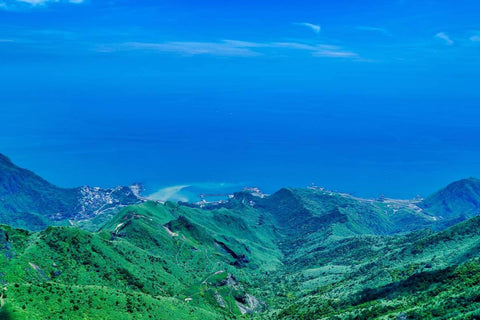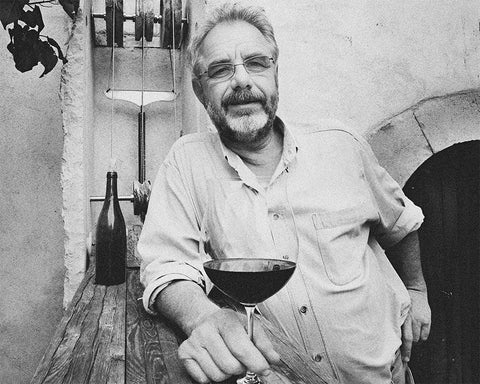How do we have a great day? Have a little rosé, that’s what I say! All of the cheers and fun songs aside, rosé is the go-to wine of choice when you want to keep things easy and light with potential for cheekiness and deep conversations. Its famous pink hue and breezy attitude are catching. Rosé is the guest at the table who can turn an enjoyable brunch into a fabulous brunch where everyone decides to go for a sunny afternoon swim that leads to talking about dreams. It seems simple at first, but once you explore rosé you see it offers much more.
What Is A Rosé?
Looking at a rosé, it’s easy to think that it’s simply a blend of white and red wine, but it actually is a fermented red wine that has had only minimal grape skin contact. To have a rosé we must start with the mash fermentation used for red winemaking. Mash (not the monster mash) fermentation is when blue grapes are fermented with the skins on. The skins add to the deepening color of the wine which is how we get our reds.
In order to get that rosé, famous pink color, winemakers use the mash fermentation process, but instead of allowing the pigments from the mash to release over a few weeks as they would for red, they interrupt the process so only a little color will have been released from the grape skins. Post interruption, it is pressed and transferred to another tank where it continues to ferment without the skins. It will eventually be bottled and voilà, the rosé is ready to go! And honestly, finally, because the day is ready for rosé.
Types of Rosés and Tasting Notes
Rosés are like the Legally Blonde of wines because at first glance based on the pink complexion people might think Rosé is surface level and basic, but once you get to know rosé, surprise there are a brilliance and complexity that was there the whole time. Rosé, welcome to Harvard. New rosé drinkers might have the impression that rosé is a sweeter, mainly day time wine, but in actuality, rosés can range from sweet with the Zinfandel rosé to fruity and floral, all the way to savory – we’ll get into it!
Let’s explore some of the wonderful rosé options. If you’re looking for something fruity with acidity the Grenache rosé or Sangiovese rosé is the way to go. Grenache rosé offers zest in the glass when chilled while Sangiovese rosé offers a more dry finish. Mourvèdre Rosé is fruity and floral, a perfect dinner party guest. Pinot Noir rosé is a lighter rosé that has a delicate fruitiness that is good for any seafood occasion. Provence rosé has that fruitiness, but more of a lean, minerality that could pair fabulously with a juicy burger.
Wanting something sweet and scrumptious then you're in the market for a Zinfandel Rosé (a.k.a. White Zinfandel.) It’s the cotton candy, melon dream that keeps giving. If you’re wanting to leave the sweeter side and try something different then saddle up with a Tempranillo rosé or Tavel rosé – for a richer glass. Syrah and Cabernet Sauvignon rosés are also savory but are made through a special method that turns rosés into mysterious scorpios that people can’t get enough of.
The Saignée Method
Rosés made using the Saignée method offer a savory yet deep experience that also can have some funk like Julia Stiles in 10 Things I Hate About You – basically the darker version of Elle Woods. Savory with rosé? It can’t be! Yes, it can and it’s thanks to ruby dream, Saignée Method. Saignée (“sohn-yay”) means “to bleed,” (ohhh dark, we love it), putting the romanticism aside, it means pulling juice from a tank of red must that is just beginning fermentation.
The winemaker removes the juice from the tank during early fermentation leaving more of a skins-to-must ratio to continue fermenting. Then after a short period – from 2 hours to 2 days – the juice from that is pulled and the Saignée rosé finishes fermenting on its own. The product is a rosé that offers a rich, bounteous venture.
As RuPaul's Drag Race star Mercedes Iman Diamond says, “Opulence, you own everything” and that’s exactly the feeling when you pick the right Saignée made rosé. Picking your Saignée rosé depends on how rich of an experience you want. As mentioned earlier both Cabernet Sauvignon rosé and Syrah rosé are made using the Saignées method and so is our friend Chinon rosé. Chinon rosés are more medium-bodied than most rosés and have a fun tanginess whereas Cabernet Sauvignon rosé has more acidity and is lighter is, closer to a blood red.
Syrah Saignées are the richer of the three that’ll make a night having a slice of your favorite pizza that much more enjoyable. At any meal from an easy-going brunch to a decadent dinner, rosé is the drink that’ll heighten the experience and add an air of levity to any occasion. No matter what you pick, a traditionally made rosé or Saignées rosé one thing is certain, rosé makes a meal a treat.
Author: Cecily Breaux ©










